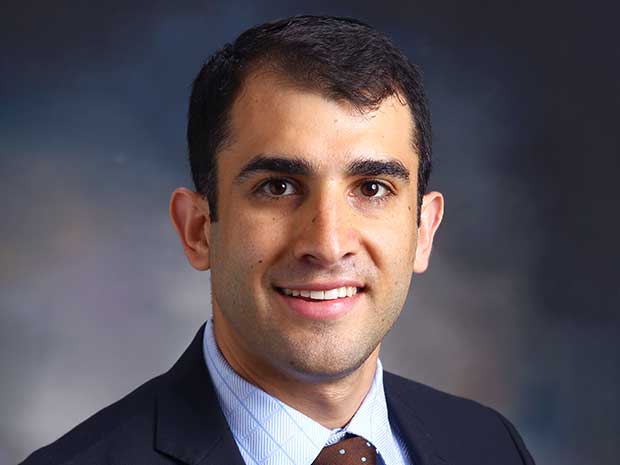It is a new era for collegiate athletics. As a result of recent events impacting the wellbeing of student-athletes (including FBI investigations into corruption and the resulting Rice Commission report), as well as the landmark California Fair Pay to Play Act and recent NCAA working group efforts to draft new rules which will provide students "the opportunity to benefit from the use of their name, image and likeness (NIL),” higher education institutions face a number of new athletic opportunities and potential risk areas.
RSM Insight:
- The resulting changes are disruptive to the current NCAA collegiate athletic revenue model (and the resulting subsidization of university activities) as the student-athlete will be in position to make money for the first time beyond a cost-of-attendance scholarship and stipend.
- Colleges, universities and students will need to proactively consider and plan for these emerging issues to successfully navigate and mitigate adverse financial, recruiting and reputational impacts.
Key considerations of potential forms of NIL payments
While the NCAA Board of Governors has laid out eight broad principles around NIL modernization, on a practical level there is considerable uncertainty around the specifics, especially around the amount and likely format of potential NIL arrangements. Nevertheless, it is clear there will be various potential tax considerations for students and schools alike.
Income tax, employment tax and benefit considerations will need to be evaluated. These considerations will be affected based upon a variety of factors including the source of the payment (e.g., from university versus commercial business), and the university’s control as to where and when athletic services are performed.
While the NCAA’s modernization principles “make clear that compensation for athletics performance or participation is impermissible” and “reaffirm arrangements that student-athletes are students first and not employees of the university,” schools, students and their families should be aware that several key tax considerations may arise depending on the structure of the compensation arrangements student-athletes enter into. Potential compensation arrangements could include:
- Stipends paid by the university
- Endorsements paid by third-party companies
- Payments resulting from self-promotion, social media, collective agreements and paid events
Stipends paid by university
Unlike athletic scholarships, a stipend is essentially a “pay to play” arrangement and brings up many new questions for schools and athletes as another potential source of value to students. From a tax perspective, will stipends be regarded as taxable income, in contrast to the current nontaxable nature of athletic scholarships? Several key questions to consider include:
- Are stipends contingent on season completion? Would a stipend be refundable if the athlete does not complete the season, and therefore be more analogous to a “pure” signing bonus?
- Would the stipend be considered as wages? If so, such payments (unless considered pure bonuses with no performance strings attached) are apportioned like wages to where an athlete performs; this then could expose the student-athlete to tax filings in multiple states.
- If the stipend is determined to be wages, would the university be deemed the employer and subject to additional considerations such as employer benefits and equal pay for equal work considerations? Importantly, would classification as wages from an employer tip the IRS’ view of athletic scholarships toward taxable income?
- How would stipends be taxed if not as wages? Self-employment income?
Endorsements paid by third-party companies
While there is a lot of debate as to the overall market size for endorsement income for college athletes, from a tax perspective, as with professional athletes, any endorsement income from third parties would be considered endorsement income reportable on Schedule C, and subject to self-employment taxes. Students considering endorsement arrangements may be able to deduct certain expenses such as agent commissions, but there are a number of other key tax planning issues that should be considered. For example:
- For foreign athletes attending U.S. universities, does their physical presence during the season render them a “U.S. person”?
- For students with higher levels of endorsement income, would it be advantageous to receive income through an S-corporation or potentially in a state with low or no income tax?
Payments resulting from self-promotion, social media, collective agreements and paid events
Given student-athletes will soon be treated similarly to non-athlete students in regard to their ability to profit from their own celebrity, can athletes now create and profit from private sports lessons or summer sport camps? If so, there are a number of key issues to consider, including:
- Should students establish an NIL income-related entity for such activity; if so, how and where should that entity be registered? What about event insurance, marketing, etc.? Could the NCAA or university restrict the breadth of such activities during—and out of the—athletic season? While promoting a commercial brand, can an athlete use his or her school name or will the school prevent this?
- For celebrity student-athletes with active social media channels and the power and revenue potential from being influencers, when is the right time to trademark a logo, now or before their professional debut?
- Could a team or group of students enter into a collective NIL agreement? For example, could stipend or endorsement payments be pooled and apportioned among students? These types of collective agreements are starting to be seen in professional athletics.
Additional payment arrangements and disclosure considerations
Without much initial guidance from the NCAA on how student-athletes may enter into arrangements that are “consistent with the collegiate model,” a number of additional questions come to mind:
- Are students required to disclose any arrangements or payments with parties such as the NCAA, schools and agents, if anyone? If so, when should an agreement for NIL compensation be disclosed?
- How will fair market value arrangements affect the eligibility of athletes? Who should determine fair market value and will there be considerations that vary by conference, school, sport, geography or position?
- Will the NCAA or schools limit the types of arrangements their athletes may enter into? For example, would an athlete be able to take a paid sponsorship in a politically charged arena such as with a gun manufacturer? What about CBD products, or even a competing apparel brand? Should off-season payments be tracked and monitored by schools for compliance with their policies?
- For any parents and families of student-athletes, what are additional considerations that should be evaluated from a family or family office perspective including privacy, tax and estate planning to help navigate uncertainty around unforeseen circumstances that may affect cash flows due to injury, disability or other factors?
Institutional considerations for student NIL compensation
As the landscape for NIL payments rapidly evolves, proactive schools are starting to think through the potential issues and impact NIL compensation may have on recruiting and athlete eligibility such as the following:
- What role should schools play in establishing guidelines and educating students, agents and boosters as part of institutional control?
- To stay consistent with the "collegiate model," could stipend payments be tied to, or deferred to, education milestones such as academic standing, progress toward graduation or other vesting criteria?
- Once the NCAA permits schools to pay athletes, will there be guidelines regarding the maximum a school can pay—similar to a league cap? Otherwise, schools will be at distinct advantages or disadvantage based on their fund to pay athletes. Schools with large programs and active alumni could offer higher “pay to play” awards, leading to an unlevel recruiting field.
- What NIL college athlete compensation risks should athletic directors, presidents and chancellors consider in order to attest their program complies with NCAA policies and procedures?
- What data privacy standards and measures need to be considered?
- Do schools have exposure related to potential liability regarding tax compliance for their student-athletes?
- What systems and technologies can schools potentially utilize to track and monitor activity to ensure athletes remain eligible for NCAA competition?
- How will schools support student-athletes in tax planning, conflict resolution and privacy of agreements? Since many professional athletes are concerned about the privacy of arrangements, it follows that student-athletes will be as well.
As additional guidance from the NCAA, conferences and athletic associations emerges, these questions and others will play a critical role in the paths taken by schools, students and their families. With significant uncertainty surrounding NIL compensation, working with experienced advisors that have a deep understanding of the complexities of higher education and athletics can help universities, third-party companies, student-athletes and their families overcome challenges and accomplish their mission and goals.



